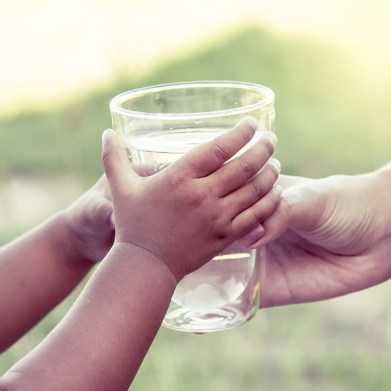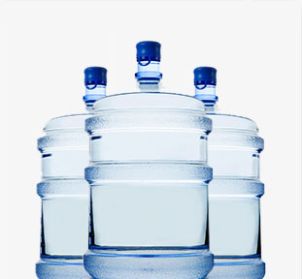
How Can I Ensure My Drinking Water is Safe?

Safe drinking water is something we often take for granted when we turn on the tap. We trust our local municipalities to test our water and keep it safe, and generally, they do a good job.
In the U.S., part of this is thanks to the Safe Drinking Water Act, which provides some protection to consumers. It ensures that public water systems test for more than 90 contaminants on a regular basis, and it requires them to publish a water quality report each year. The law also requires that public health advisories be issued when a community’s drinking water is or could be contaminated by pathogens. In Canada, Guidelines for Canadian Drinking Water Quality are set by Health Canada’s Water and Air Quality Bureau in partnership with the provinces, territories and other federal departments.
Yet while community water systems do a great job of treating your water, for a variety of reasons, they can’t ensure that the water in your tap is free of issues. That’s why it’s important to educate yourself on potential problems that may exist and how you can address them.
How Does Drinking Water Become Contaminated?
Water can be contaminated at its source when chemicals from fertilizers or pesticides leak into lakes and streams. Organic solvents, petroleum products and heavy metals from industrial disposal sites or storage facilities can also find their way into aquifers. Human wastes from sewage and septic systems can carry harmful microbes into drinking water sources, as can wastes from animal feedlots and wildlife.
In some cases, local ground water conditions also may naturally contain contaminants such as arsenic and other heavy metals, which at certain levels are unsuitable for drinking water.
According to the Environmental Protection Agency (EPA), more than 92% of the population supplied by community water systems receive drinking water that meets all existing health-based standards. That’s good news, but the fact is that the EPA standards only go so far. The EPA’s secondary standards, which cover contaminants that may have aesthetic or cosmetic effects, are guidelines and not legally enforceable. Additionally, the EPA has yet to issue enforceable standards for some emerging contaminants, such as PFOA and PFOS.
Contaminants also can get into the water anywhere along the route from the water source to your home, through supply lines or even through an individual fixture in the home. Contamination can happen within the distribution system itself, from a breach in the pipes or from corrosion of older pipes made of lead or copper.
While in the U.S., the 1986 Safe Drinking Water Act mandated that new plumbing materials be lead-free, an estimated 6 to 10 million lead service lines (pipes that connect homes to the water main) are still in use. Older homes may also contain lead pipes, fixtures or fittings. In Canada, a 2019 investigation of drinking water found that one-third of municipalities tested had levels of lead contamination exceeding guidelines.
At the same time, homeowners also may not have access to a community water system. About 43 million people—or 15% of the U.S. population—rely on private wells for drinking water. In Canada 14%, of their population does not rely on municipal water. Those on well systems are responsible for ensuring their own water quality.
All of the above adds up to the fact that while community water systems do a great job of treating your water, they can’t ensure that the water in your tap is free of issues. So what steps should you take?
Learn More about Your Local Water
The EPA requires your local water agency to publish an annual Consumer Confidence Report (CCR) or water quality report. It contains information on the sources for your drinking water as well as the level of contaminants found over the course of the year.
Knowing what levels of contaminants are in your water source—and if they are harmful — can help you decide whether you need to take additional actions to improve your water quality.
Look for Signs of Contamination or Low-Quality Drinking Water
The next step in evaluating your water requires putting your eyes, nose and mouth to the test. Evaluate the look, smell and taste of your water. Is it discolored? Does it have an off odor? Does the water look cloudy? A rotten egg smell could indicate the presence of hydrogen sulfide gas. A smell of oil or asphalt can occur if there is manganese in the water. Bitter or sour smells can be a sign of iron. Look for rust stains around fixtures and sinks, as these are also a sign of iron.
All that said, you can see and smell some contaminants, but others can’t be detected with the naked eye or simple smell test. You need professional water testing to identify those issues.
Have a Professional Test Your Drinking Water
To learn exactly what your drinking water contains, a professional test is recommended. Culligan offers a free home water test that will evaluate your water for hardness, chlorine, total dissolved solids (TDS) nitrates, iron and more. We’ll conduct the test in your home and can discuss the results at the same appointment. It only takes about 10 minutes to obtain the results.
If more extensive tests are recommended, we’ll send your water sample to our IL EPA-approved lab. Lead and arsenic, for example, are two contaminants that need to be tested for in a lab. Results of those tests should be available in a few days. Professional in-home testing and results from an EPA-approved lab means you can be confident in the results.
Invest in a Reverse Osmosis System
Based on the results of the test, you may want to consider a water filtration system. A Culligan reverse osmosis filtration system can remove up to 99% of common contaminants found in your tap water, and can reduce lead, arsenic and pesticide runoff. That means better water for your family for both drinking and cooking, without the waste, expense and hassle of bottled water. Your Culligan water expert can help you identify the reverse osmosis system that will deliver the cleanest, safest drinking water solution for your family.
Find A Location Near Me

Schedule Your Free
In-Home Water Test
Get better water in your home by scheduling an appointment with your local Culligan Water Expert.
Discover More
See All Articles

PFAS Regulations in the U.S.
Learn about PFAS and the latest EPA guidelines for better water quality.
15 min read

Explore

Explore
Our Products

Water Softeners
With any of our soft water systems, get more out of your water-using appliances while spending less on energy and detergent.
View Products

Water Delivery
There’s never been a better time to enjoy the convenience of scheduled bottled water deliveries from the Culligan® Water Experts
View Products

Water Filtration Systems
Culligan's water filtration systems have improved water quality for thousands of families worldwide.
View Products
